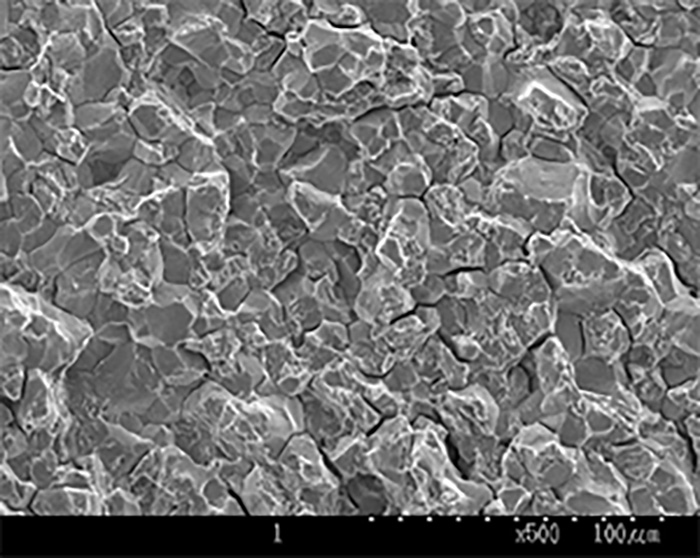Corrosion/Corrosion Resistance
Constant load delayed fracture test
JFE-TEC proposes the optimum test method for each set of conditions.
Constant load delayed fracture test
Test performed to measure the threshold stress for delayed fracture under constant load (constant tension, bending, etc.).
A test specimen under stress loading is immersed in a corrosive solution, and the following items are measured.
- Time to crack initiation
- Lower threshold stress for crack initiation
- Lower threshold stress intensity factor for crack initiation
Constant strain methods
-
3-point support
beam method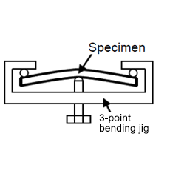
4-point support
beam method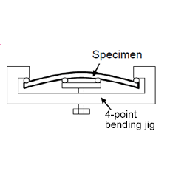
-
C-ring method
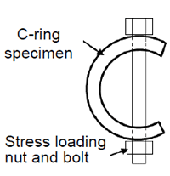
U-ring method
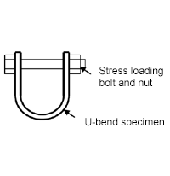
Constant load tensile stress fracture test
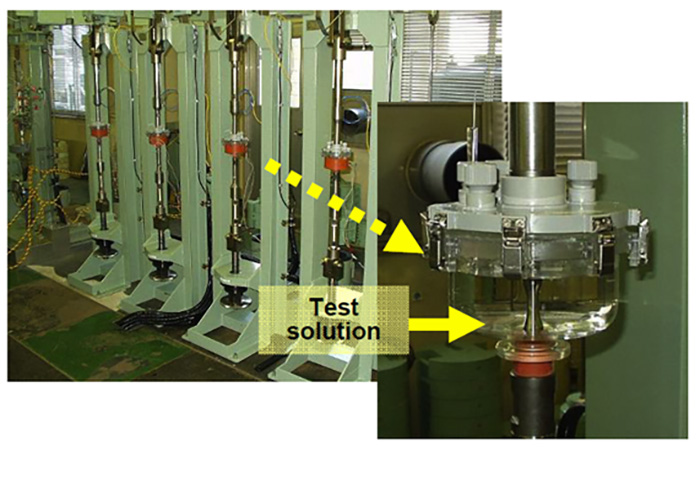
(Enlarged view of specimen)
Slow strain rate tensile delayed fracture test (SSRT)
The slow strain rate tensile test (tension speed: 0.1 mm/min-0.0001 mm.min) is performed either after or during hydrogen charging.
-
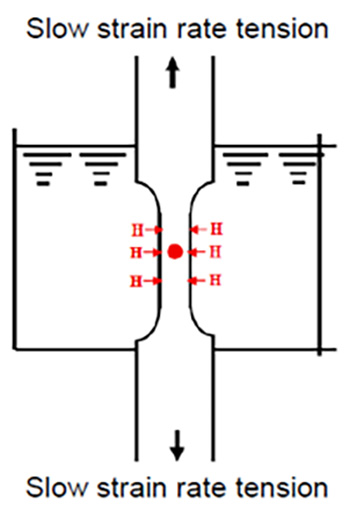
Image of slow strain rate tensile delayed fracture test (SSRT) -
Method for quick measurement of degree of hydrogen
embrittlement of material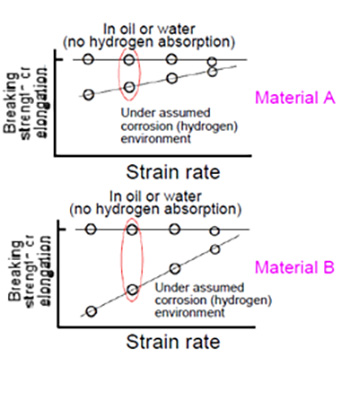
Image of test data
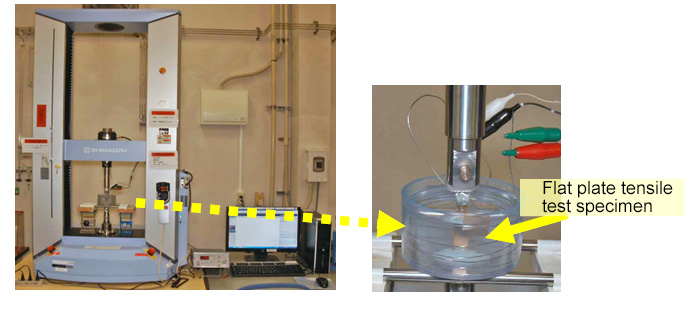
Analysis/evaluation of diffusible hydrogen
Analysis of diffusible hydrogen
-
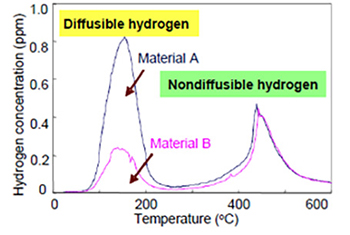
Example of hydrogen extraction curve
Hydrogen detection range of detection element: 0.001-10 ppm -
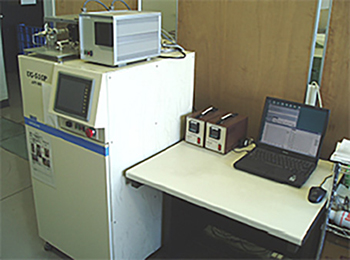
Atmospheric pressure ionization mass spectrometer -
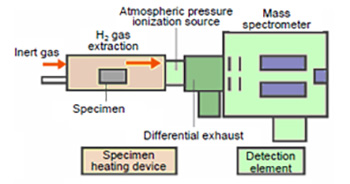
Principle of measurement
SEM observation of hydrogen embrittle a sample
Grain boundary cracks (in some cases, quasi-cleavage cracks also occur)
